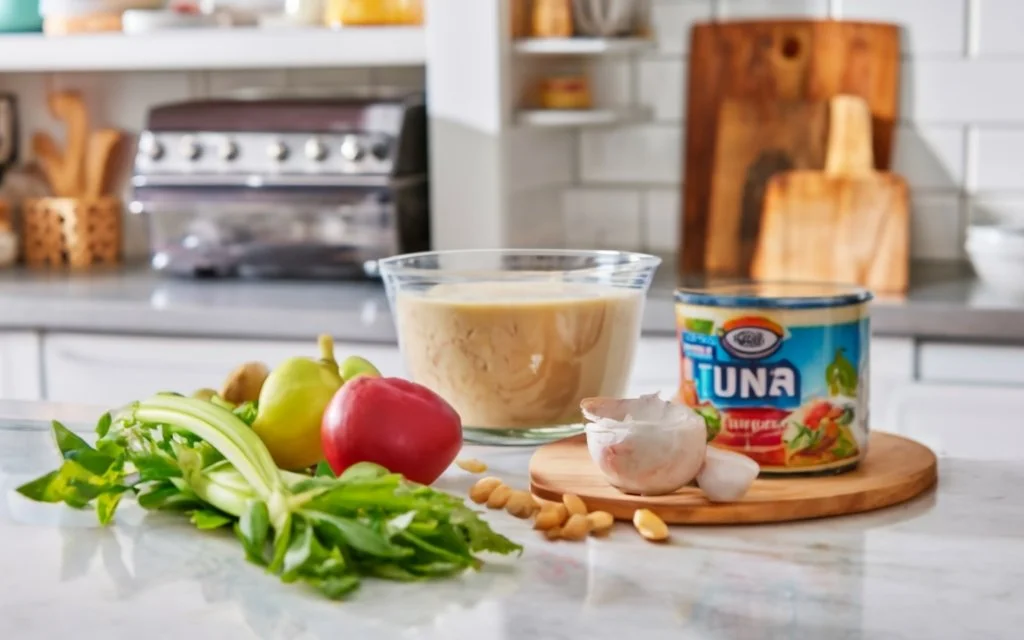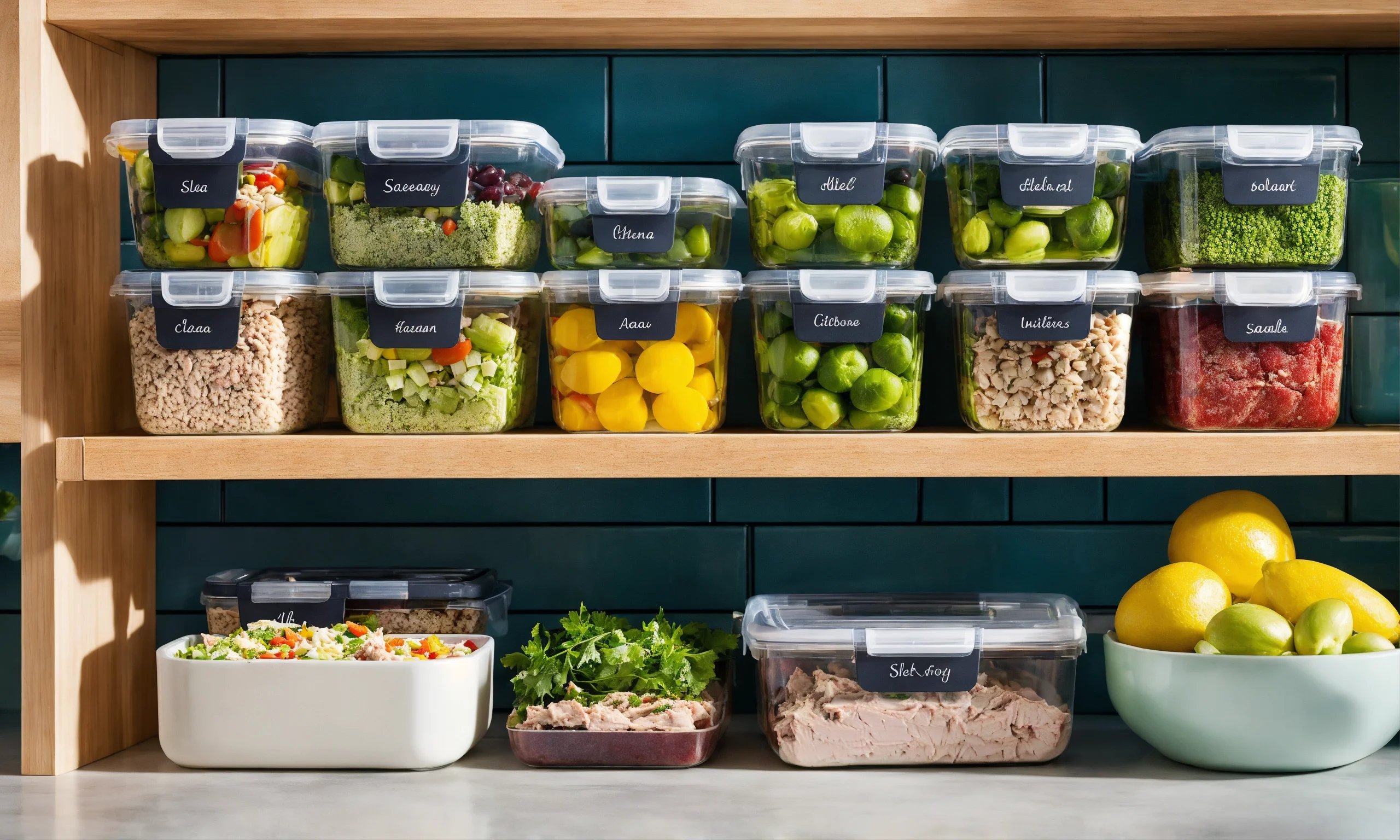Tuna salad, a staple in many households, is not just a delightful mix of flavors but also a test of culinary wisdom. How long can this favorite dish safely linger in your fridge? This comprehensive guide dives into the heart of preserving tuna salad, ensuring every spoonful remains as fresh and delicious as when it was first mixed. From understanding the factors that affect its shelf life to creative ways to repurpose leftovers, we’ve got you covered. Let’s embark on this flavorful journey, ensuring your tuna salad stays both safe and scrumptious!
Introduction to Tuna Salad Preservation

Ah, tuna salad! It’s the go-to dish for quick lunches, picnics, and easy dinners. But, how long does this delightful concoction stay fresh in the fridge? This question isn’t just about savoring its taste; it’s about ensuring safety and quality.
Understanding Tuna Salad’s Popularity and Preservation Needs
Tuna salad’s charm lies in its simplicity and versatility. Whether it’s sandwiched between bread slices or served as a standalone dish, its appeal is undeniable. But, as with any food, understanding its shelf life is crucial. The last thing anyone wants is their favorite dish turning into a source of foodborne illness.
The Importance of Knowing Shelf Life
Knowing the shelf life of tuna salad is more than a culinary concern; it’s a health imperative. The right knowledge can prevent waste and protect your family from potential health risks. So, let’s dive into the world of tuna salad preservation, ensuring every bite is as safe as it is delicious!
Key Factors Affecting Tuna Salad’s Fridge Life

When it comes to keeping tuna salad fresh and tasty, several factors come into play. It’s not just about tossing it in the fridge and forgetting about it. Let’s delve into what really matters in extending the life of your beloved tuna salad.
Ingredient Freshness and Its Impact
First things first, the freshness of your ingredients is paramount. The shelf life of your tuna salad is directly tied to how fresh your ingredients were to begin with. Freshly cooked tuna, crisp celery, and just-ripe avocados will ensure your salad stays fresher for longer. Remember, the clock starts ticking on your salad’s freshness as soon as your ingredients are prepped.
The Role of Refrigeration Time
Time is of the essence! To keep your tuna salad in tip-top shape, it’s imperative to refrigerate it within two hours of preparation. You might wonder, why the rush? The answer lies in the fact that microbial growth thrives at room temperature, and delaying refrigeration is akin to rolling out the red carpet for bacteria. Consequently, keeping your salad cool not only slows down this growth but also ensures it remains both safe and savory.
Significance of Use-By Dates on Ingredients
Don’t ignore those use-by dates on your canned tuna and mayonnaise. They’re more than just numbers; they’re your guide to ensuring the quality and safety of your salad. Using ingredients past their prime not only affects the taste but could also pose health risks.
Optimal Storage Methods for Tuna Salad

Storing tuna salad correctly is not solely about prolonging its life; it’s equally about maintaining its taste and safety. Therefore, let’s delve into and unlock the secrets to keeping your tuna salad as fresh as the day it was made, ensuring both flavor and health are preserved.
Choosing the Right Containers and Temperatures
The battle against spoilage begins with the right container. Firstly, opt for airtight containers to effectively keep out unwanted bacteria and odors. Glass or high-quality plastic works wonders in this regard. Furthermore, temperature plays a crucial role. It’s essential to keep your salad chilled below 40°F (4°C). This chilly environment significantly slows down bacterial growth, thereby keeping your salad both safe and scrumptious.
Tips for Extending Shelf Life
Want to keep your tuna salad fresher for longer? Here’s a trick: add a squeeze of lemon juice. It’s not just for flavor; the acidity helps inhibit bacterial growth. Also, consider portioning your salad into smaller containers. This way, you only open what you need, keeping the rest as fresh as possible.
The Do’s and Don’ts of Tuna Salad Storage
Here’s a quick rundown for : Do keep your salad cold, do use airtight containers, and do consider adding a bit of lemon for freshness. And the don’ts? Don’t leave your salad out for more than two hours, and don’t ignore any funky smells or appearances – these are tell-tale signs that it’s time to bid farewell to your salad.
Can You Freeze Tuna Salad?
Freezing tuna salad is a topic shrouded in mystery for many. Let’s clear the air and find out if you can indeed freeze this beloved dish without compromising its quality.
Understanding the Freezing Process
Yes, you can freeze tuna salad, but it’s not as straightforward as it sounds. The key lies in understanding how the freezing process affects different ingredients. Simple tuna salads, with fewer ingredients, generally freeze better. However, salads with mayonnaise, eggs, or crunchy veggies might not fare as well, as freezing can alter their textures and flavors.
Impact on Texture and Taste
When you freeze tuna salad, expect some changes. Mayonnaise can separate and become grainy, while veggies like celery or onions can turn mushy. To minimize these effects, consider freezing the tuna separately and adding fresh mayo and veggies when you’re ready to serve.
Best Practices for Freezing and Thawing
If you decide to freeze your tuna salad, here’s how to do it right:
- Use freezer-safe, airtight containers to prevent freezer burn.
- Label your containers with the freezing date – tuna salad is best used within three months of freezing.
- Thaw your salad in the refrigerator, not at room temperature, to reduce the risk of bacterial growth.
How to Tell If Tuna Salad Is Bad

Knowing when to say goodbye to your tuna salad is crucial for your health. Let’s look at the tell-tale signs that indicate it’s time to toss it out.
Using Your Senses: Smell and Visual Inspection
Trust your nose and eyes first. Indeed, a spoiled tuna salad often emits a pungent or sour smell – a clear sign that it’s no longer safe to eat. Additionally, visually inspect the salad; if you notice any mold, discoloration, or an unusual appearance, it’s undoubtedly time to bid farewell. Conversely, fresh tuna salad should maintain a creamy, consistent look without any signs of separation or spoilage.
The Risks of Tasting
Tasting to determine if your tuna salad is still good is a no-go. Even a small amount of spoiled food can cause foodborne illness. It’s better to err on the side of caution. If your salad fails the smell or visual test, it’s best to discard it.
Time: Respecting the Salad’s Shelf Life
Remember, even under optimal storage conditions, homemade tuna salad should be consumed within 3-5 days. If it’s been longer, regardless of how it looks or smells, it’s safer to throw it away.
Creative Ways to Use Leftover Tuna Salad

Got some leftover tuna salad? Great! Let’s get creative and transform it into new, exciting dishes. Say goodbye to food waste and hello to culinary innovation!
Innovative Recipes and Ideas
- Tuna Salad Stuffed Avocados: Scoop out some avocado and fill it with tuna salad for a nutritious and delicious treat. It’s a perfect blend of creamy and savory flavors.
- Tuna Salad Pizza: Spread your tuna salad over a prebaked pizza crust, sprinkle some cheese, and bake. It’s a unique twist on your traditional pizza night.
- Tuna Salad Quesadillas: Combine tuna salad with cheese between tortillas and grill. Serve with salsa for a delightful fusion dish.
- Tuna Salad Pasta: Mix your leftover tuna salad with hot pasta. Add a dash of olive oil and Parmesan for a quick and tasty meal.
- Tuna Salad Rice Cakes: For a light snack, spread tuna salad on rice cakes and garnish with herbs. It’s simple, healthy, and satisfying.
Transforming Leftovers into New Dishes
These ideas not only add variety to your meals but also ensure that every bit of your tuna salad is enjoyed to its fullest. Experiment with these suggestions or come up with your own unique creations. The possibilities are endless!
The Health Benefits of Tuna Salad

Tuna salad isn’t just a treat for your taste buds; it’s also packed with nutrients that are good for your body. Let’s dive into the health benefits of this versatile dish.
Nutritional Components of Tuna Salad
Tuna, the star ingredient, is a powerhouse of nutrition. It’s rich in Omega-3 fatty acids, which are essential for heart health and reducing inflammation. Tuna is also a great source of high-quality protein, vital for muscle building and repair. Plus, it’s loaded with vitamins and minerals like selenium, Vitamin B12, magnesium, and potassium.
Balancing Health with Flavor
The beauty of tuna salad is in its versatility. You can make it healthier by adding a variety of vegetables, which increase fiber and nutrient content. Opting for low-fat mayonnaise or yogurt can also reduce calorie intake while maintaining the creamy texture. Remember, moderation is key, especially considering the mercury content in tuna. The Mayo Clinic suggests limiting tuna intake to two to three servings per week.
Frequently Asked Questions About Tuna Salad Preservation
In this final part, let’s address some common queries about keeping tuna salad fresh and safe. These FAQs are gathered from popular concerns and expert advice.
Common Queries and Expert Answers
- How long can I keep tuna salad in the fridge?
- Properly stored in an airtight container, tuna salad can last for three to five days in the refrigerator.
- What’s the most effective way to store tuna salad?
- The best method involves using an airtight container and keeping your fridge temperature at or below 40°F (4°C).
- Is it safe to freeze tuna salad?
- Yes, but be aware that freezing may affect the texture, especially if the salad contains mayonnaise or crunchy vegetables.
- How can I tell if my tuna salad has gone bad?
- Look out for a sour smell, discoloration, or any signs of mold. If in doubt, it’s safer to discard it.
- Can I extend the shelf life of my tuna salad?
- Using fresh ingredients, refrigerating promptly, and storing in a clean, airtight container can help maximize shelf life.
- How do I properly pack tuna salad for lunch?
- Use a clean, airtight container and consider an insulated lunch bag with an ice pack to keep it cool until consumption.
Ensuring the Best for Your Tuna Salad
As we wrap up our comprehensive journey through the world of tuna salad preservation, let’s revisit the key takeaways to ensure your tuna salad remains a delightful and safe addition to your meals.
Tuna salad, with its blend of flavors and textures, is more than just a dish; it’s a culinary adventure that requires careful handling to maintain its freshness and safety. Remember, the longevity of your tuna salad hinges on several crucial factors: the freshness of ingredients, timely refrigeration, proper storage methods, and an awareness of its shelf life.
In conclusion, the journey of your tuna salad from preparation to consumption is filled with opportunities to enhance its flavor and extend its freshness. By following the guidelines and tips shared in this guide, you can savor every bite of your tuna salad with confidence and pleasure.


